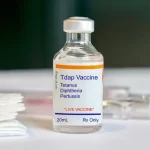Polio is a highly infectious disease that affects the nervous system and can lead to paralysis, muscle weakness, and even death. Fortunately, vaccines have been developed to prevent polio, and these have been highly effective in reducing the number of cases of polio worldwide. In this article, we will take a closer look at the different types of polio vaccines available, including the most well-known polio vaccine, the inactivated poliovirus vaccine (IPV), and the oral poliovirus vaccine (OPV).
Name of polio vaccine
Understanding the Polio Virus
To understand how polio vaccines work, it is important to first understand the polio virus itself. Poliovirus is a highly infectious virus that is transmitted through contact with contaminated fecal matter, food or water. The virus primarily affects young children under the age of five, and symptoms can range from mild to severe, including fever, sore throat, and muscle weakness.
The History of Polio Vaccines
Polio vaccines have been in development for over a century, with the first successful vaccine being developed by Jonas Salk in 1955. This vaccine, known as IPV, was created by inactivating the virus through a process of formalin treatment, which killed the virus while preserving its antigenic properties. This allowed the body’s immune system to recognize and develop immunity to the virus without actually becoming infected.
Inactivated Poliovirus Vaccine (IPV)
IPV is a highly effective polio vaccine that is administered through an injection. The vaccine is made by growing large quantities of poliovirus in a laboratory, and then inactivating the virus with formalin. This process preserves the antigenic properties of the virus, which allows the body’s immune system to recognize and develop immunity to the virus without actually becoming infected.
Oral Poliovirus Vaccine (OPV)
The oral poliovirus vaccine (OPV) is another highly effective polio vaccine that is administered orally. Unlike IPV, which is made from inactivated virus, OPV is made from weakened but live poliovirus strains that have been attenuated to reduce their virulence. When a person is given OPV, the weakened virus replicates in the gut and stimulates the immune system to produce antibodies to the virus.
Combination Vaccines
There are also combination vaccines available that provide protection against polio as well as other infectious diseases. For example, the pentavalent vaccine protects against polio, diphtheria, pertussis, tetanus, and Haemophilus influenzae type b (Hib).
The Importance of Vaccination
Vaccination is critical in the fight against polio. Polio has been eliminated in most parts of the world, thanks to the widespread use of vaccines. However, there are still regions where the virus is endemic, and outbreaks can occur in areas where vaccination rates are low. It is important to maintain high vaccination rates to ensure that polio does not resurface as a global threat.
Side Effects of Polio Vaccines
Like all vaccines, polio vaccines can cause side effects, although these are usually mild and short-lived. Common side effects include redness and swelling at the injection site, fever, and headache. More serious side effects, such as an allergic reaction, are rare.
Conclusion
Polio vaccines have been a critical tool in the fight against polio, and have been highly effective in reducing the number of cases of polio worldwide. The two main types of polio vaccines are IPV, which is administered through an injection, and OPV, which is administered orally. Combination vaccines are also available that provide protection against polio as well as other infectious diseases.
It is important to maintain high vaccination rates to ensure that polio does not resurface as a global threat. While polio has been eliminated in most parts of the world, it is still prevalent in a few countries, and there is always the risk of outbreaks in areas where vaccination rates are low. Therefore, it is essential to encourage people to get vaccinated and raise awareness about the importance of vaccination in preventing the spread of polio.
It is also important to note that while polio vaccines have been highly effective, they are not foolproof. Some individuals may not develop full immunity to the virus, and there is always the risk of vaccine failure. However, the benefits of vaccination far outweigh the risks, and vaccination remains the best way to protect oneself against polio.
FAQs
- What is the name of the polio vaccine? The most well-known polio vaccine is the inactivated poliovirus vaccine (IPV) and the oral poliovirus vaccine (OPV).
- How does the inactivated poliovirus vaccine work? The inactivated poliovirus vaccine (IPV) is made by growing large quantities of poliovirus in a laboratory and then inactivating the virus with formalin. This process preserves the antigenic properties of the virus, which allows the body’s immune system to recognize and develop immunity to the virus without actually becoming infected.
- What are the side effects of polio vaccines? Common side effects of polio vaccines include redness and swelling at the injection site, fever, and headache. More serious side effects, such as an allergic reaction, are rare.
- Can polio vaccines cause polio? No, polio vaccines cannot cause polio. The inactivated poliovirus vaccine (IPV) is made from dead virus, while the oral poliovirus vaccine (OPV) uses a weakened virus strain that cannot cause the disease.
- Why is vaccination important in preventing the spread of polio? Vaccination is important in preventing the spread of polio because it stimulates the body’s immune system to develop immunity to the virus. This not only protects the individual from the disease but also helps prevent the virus from spreading to others who may be susceptible.








